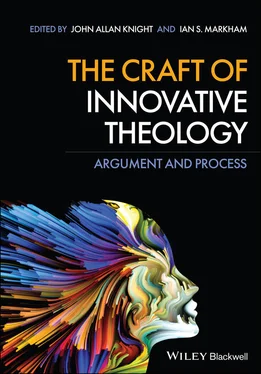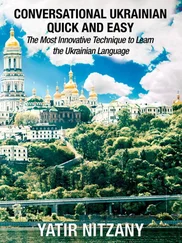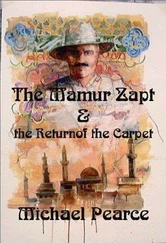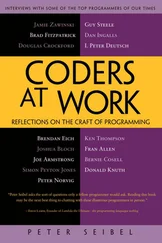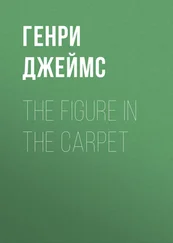1 ...6 7 8 10 11 12 ...25 This picture of truth as it pertains to religious statements demonstrates the flexibility and indeterminacy at the heart of a pluralistic theology. The test for such a theology will focus on how the “grammar” of the beliefs and practices of a community facilitate its shared ends and values. Where a question arises as to the truth or legitimacy of a particular belief, doctrine or practice, the final arbiter must be the community itself, and as communities are by nature dynamic, so too will its reflected picture of religious truth. A pluralistic theology cannot be ossified since the negotiation of what counts as “true belief,” i.e. “warranted practice,” will necessarily emerge from contestation, negotiation and provisional acceptance. Within this framework, again, lies an openness to new possibilities and hybrid expression.
Radical Openness and Poesis: The Principles of Contingency and Attraction
I will consider the next two characteristics together as they form two sides of the same coin. Pluralistic theology must be both expansive and comprehensive in terms of its creative power and potential, as well as integrative and discriminative in terms of its manifestation or instantiationinto particular, beautiful, and useful forms. Openness and contingency here refer to the scope and freedom of this creative power: there is an effervescence, an overflowing nature to pluralistic theology which reflects the plethora of creative possibilities made possible following the loosening of theological strictures wrought by the principle of indeterminism. At the same time this centrifugalopenness and expansiveness is (not so much restricted as) given form and structure, through a parallel, contrary pressure toward “felicitous particularity.” Importantly, this centripetal, poetic 14pressure is guided, as we shall see, by aesthetic criteria. These two forces work together through a tense dialectic: a fecund mutual interanimation encompassing a simultaneous centrifugal expansion shaped by a centripetal particularization. Energized by this dialectic, pluralistic theology is opened up to the voice of the religious Other in ways that recognize the creative and indeterminate potential of mutual engagement, while at the same time kenoticallyoffering its own tradition as a substrate for differentiation. The effect is that theology, characterized by radical openness, tempered by radical poesis, invites the creation of novel insight, greater solidarity, and a more comprehensive consolation.
It is worth elaborating these mutually opposed yet creative forces further, not only to clarify their activity but also to intimate the ironic nature of pluralistic theology we shall describe later. Two processes are at the heart of the centrifugal /centripetal tension I have described: the centrifugal, creative revelation of metaphorical predication, and the centripetal, coalescing manifestation into forms regulated by aesthetic attraction. This dialectic both/and movement between creatively opposed forces recapitulates the dynamics of metaphor. Indeed this dynamic is the fountainhead at the center of creative theologizing. It will be useful to rehearse Paul Ricoeur’s highly influential “interactionist” account of metaphor in order to describe this dynamic.
Following Ricoeur, we can define metaphor as a figure of speech whereby one thing is referred to in terms which evince another. 15On this view, metaphor is a semantic generator whereby the terms of the metaphor – importantly understood as statements rather than individual words – work to redescribe each other in a hermeneuticspiral. Furthermore, as these metaphorical “poles” are each connected by a web of reference to both their horizons of language and to their corresponding aspects of lived experience, what metaphor brings together are not individual elements of language – semantic sound bites so to speak – but connected aspects of life. Pluralistic theology thus brings into creative tension interrelated webs of belief and practice in the same way as when holding together two corners of a seamless fabric what is connected to the corners is also brought together. This is important for a number of reasons. Firstly, for a metaphor to be fertile, its terms’ associated commonplaces must be readily summoned. Only then can metaphor engage the imagination so that the statement evinces a “semantic twist” (in Monroe Beardsley’s words) such that novel interpretations are created. Secondly, this aspect of metaphor also guards against the decontextualization which naïve comparisons often effect. Pluralistic theology doesn’t simply substitute an emic term or idea for its eticcounterpart, but rather seeks to knit together the webs of reference contextualizing those terms. By leveraging the action and structure of metaphor in the ways which I shall shortly describe, pluralistic theology seeks to bring into conversation fuller and more detailed areas of lived religious experience to create a more robust hybrid theology.
As just mentioned, metaphor works by redescribing each pole or element of the metaphor in terms of the other. 16The dialectic of metaphor must begin with and maintain difference, 17for only with this alterity is the necessary logical or semantic incoherence, which is the spur to the metaphorical imagination, present. In meeting a metaphorical statement there is a disjunction which the interpreter sees as logically incoherent. This is illustrated by “Man is wolf” to take Freud’s famous example. The pressure of this disjunction imaginatively calls forth a term’s associated commonplaces – what Gadamer calls a horizon of meaning and Voloshinov 18the apperceptive context – and from this horizon new descriptions are associated with the other term in the metaphor; humans are seen to be more lupine, in our example. The process is bidirectional or multidirectional so that each term in the metaphor is redescribed in terms of the others; wolves are thus seen to be more human. In this way the semantic field of a metaphor is effectively stretched to include these new connections. Ricoeur calls metaphors “semantic generators” as these new connotations, this new metaphorical interpretation, exists between the parent terms of the metaphor, owing allegiance, as it were, to its sources while differing from each. Metaphor is a semantic hybrid which loses not its foundation in its sources but neither can it be contained by them. It is the result of an imaginative, mutual redescription of its constituent terms and succeeds through its dialecticalboth/and in maintaining the alterity of its terms while creating new shared references between them. It creates new meaning from bringing together, in the mind, established terms and contexts in new and unforeseen ways.
This model of metaphorical dialectics explains how novel, hybrid significations are formed de novo . Theology, as alluded to at the beginning of this chapter, is inherently hybrid – a nexus of multiple narratives and sources continually reacting to changes in the environment, as well as its inherited tradition of interpretation. A thoroughly pluralistic theology, like metaphor, is also a tense nexus of intrinsic and extrinsic sources redescribing each other according to the inner dialectic of metaphorical predication, but also guided by the frame in which theologizing takes place. Importantly, the dialectics of metaphor succeed in revealing the frame since metaphor begins in semantic rupture. This disruption allows us to see the otherwise hidden frame, making a hybrid, pluralistic theology potentially a corrective for negative pressures underlying the frame. What I am suggesting is that the dynamics of consciously hybrid, pluralistic theology can be leveraged for revelatory and liberative ends. Not only can this happen; I argue that it should happen. Pluralistic theology here makes possible a prophetic voice, illuminating injustice and revealing the scars and cracks long hidden under the carapace of doctrine and accepted religious tradition.
Читать дальше
